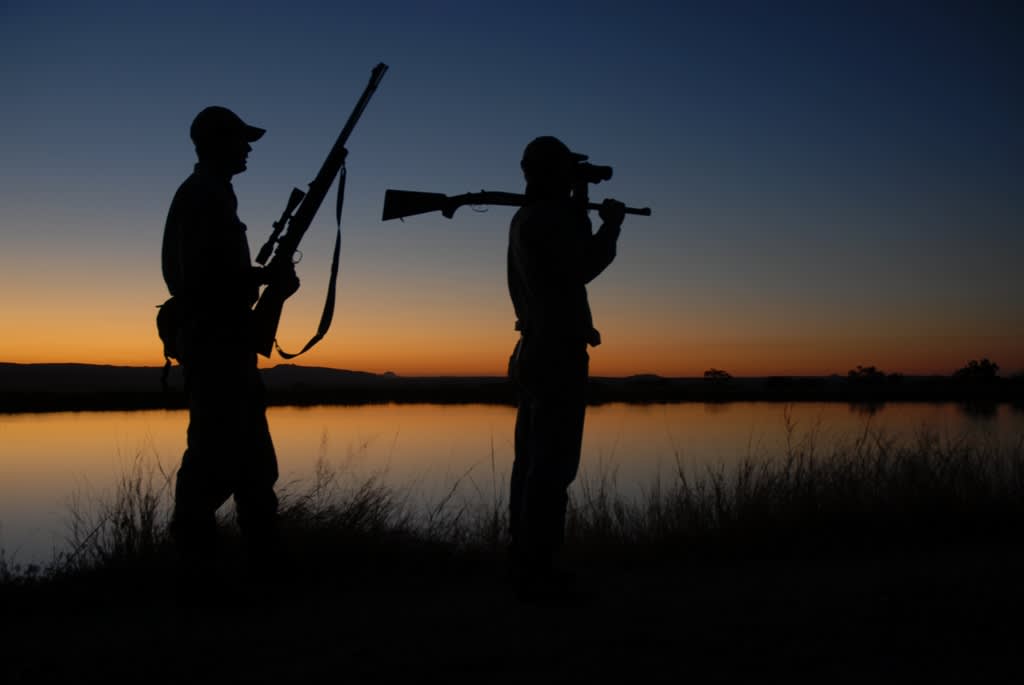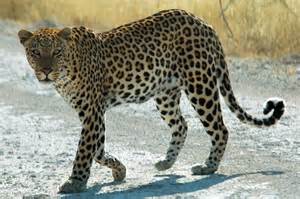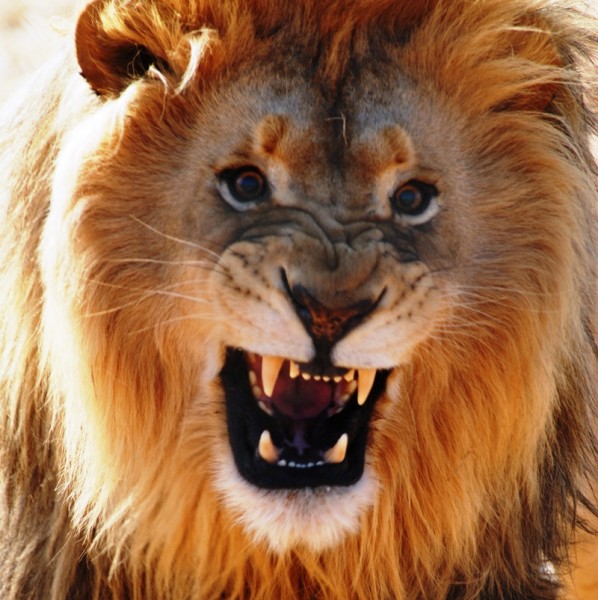SCI Highlight: The Big Five Safari in Africa—Does It Still Exist?
Hunting with Joe Byers 02.05.15

The big five safari is an iconic outdoor adventure that’s been enjoyed by the likes of former President Teddy Roosevelt and other legendary hunters. However, is such a hunt possible today? What would it be like? What would it cost? At this week’s Safari Club International Convention in Las Vegas I tracked down Keith Atcheson, who grew up in his father’s big game booking business and has been advising hunters for 40 years. He was kind enough to explain where a hunter could pursue each of the big five animals (leopard, Cape buffalo, elephant, lion, rhino), and elaborate upon government regulations pertaining to said hunts. Few of us will hunt the big five, but oh what a dream!
The following is sourced straight from Atcheson, with a few edits.
If a person is interested in a big five classic hunting safari, he or she will probably take more than one trip. Right now, the only place you can do all the big five in a 30-day time span is South Africa in the areas that border the bigger national parks. African game regulations are constantly changing. For example, Botswana is now closed to elephant hunting and there is a temporary ban on the importation of ivory to the USA. Zambia is closed to all cat hunting and is supposed to open again in 2016. South Africa is the only country where you can get a white rhino—and it will cost over $100,000 to shoot one. You can do some darting, and those trips are around $10,000. Currently, the best lion hunting is Zimbabwe, Tanzania, Mozambique, and if Zambia opens, it will be ideal as well.
 Leopard
Leopard
Namibia, Zimbabwe, Mozambique, Zambia (if reopened), and Tanzania offer leopard hunting. Most cat safaris are 14 to 16 days in length, are very time consuming, and everything revolves around the cat—such as hanging multiple baits and then driving around each morning to see if the baits have been hit. Most professional hunters are using trail cameras, which helps take the guess work out of judging size and sex. Many safaris offer plains game hunting during the daytime. Once you have a leopard on bait, you set up a blind and wait in late evening until just after dark and the same in the morning. Almost all of the government lands are daylight-only hours, so half an hour before sunrise and after sunset. In Zimbabwe, on private lands and even some forest areas, you can hunt at night with a light, greatly increasing your chances. The other option is to add a dog team, which highly increases the odds of success. This will add about $6,500 to your overall costs and is legal only in Zimbabwe and Mozambique.
Cape buffalo
Namibia, Zimbabwe, South Africa, Mozambique, Tanzania, and Zambia offer Cape buffalo hunts. Most hunts are going to be 10-day affairs and offer plains game as well. In some cases you can take two buffalo in Zimbabwe and Tanzania. On a typical Cape buffalo hunt, you drive out each morning looking for where buffalo have watered at night. The target is a group of bulls, dugga boys, and then set off on foot for several hours of tracking until you find them lying in their beds. Other methods involve hunting herds, but this is very difficult, because you must fool so many eyes and your chance of shooting the wrong animal increases. Plus, they don’t call it Black Death for nothing. My wife Nicole was badly injured by one in 2004 and others have had bad experiences. Cape buffalo are extremely difficult to kill once wounded.
Elephant
Tusk-less elephant hunts are available in Zimbabwe in the Zambezi valley and some other campfire areas and conservancies. These are very affordable. If you want the ultimate dangerous-game hunt, hunting tusk-less or cow elephants is the most dangerous of all—females with calves are very defensive. You won’t shoot a cow with a calf but the animals travel in herds for protection.
In Namibia they have their own elephant hunts in the Caprivi Strip. These licenses are tribal permits distributed by the hunting councils and a few are offered each year for $15,000 to $20,000, but the ivory and all other elephant parts cannot be imported.
Currently, the best trophy bull elephant hunts are in Namibia up in the Caprivi Strip in Bushmanland, in Zimbabwe along the border of Botswana, and areas to the south of that along Gonarezhou Park. There is also good elephant hunting in many of the rugged Zambezi river valley areas to the far north of the country. The elephant ivory ban has Zimbabwe at a standstill. Hunters can still go and hunt elephant bulls but until the ban is lifted, it is not importable. We do expect it to open shortly but it’s not official until announced.
There is some elephant hunting in Zambia for decent bulls, Tanzania is temporarily closed and the predictions are that it won’t open for a while. In Mozambique, very good elephant hunting can be found. Finally, South Africa has excellent trophy bull hunting along the park boundaries and is some of the best available today. A trophy bull hunt will cost $45,000 to $65,000 and in some locations even more.
Lion
Lion hunting in Africa is still going fairly strong. Zimbabwe, Zambia, Tanzania, and Mozambique all have excellent lion hunting opportunities. There has been a recent US Fish and Wildlife decision not to list lions as endangered species, but it is looking like you will have to obtain an import permit very similar to leopard and elephant from some countries. Free-range lion hunting is very good in Zimbabwe, Tanzania, Mozambique, and a few places in South Africa. The costs of those hunts range from $50,000 to $200,000. The best places in Zimbabwe are in the Matetsi region near Victoria Falls, lower Zambezi valley government concessions, or on conservancies. The cost there is about $80,000 to $100,000.
The South Africa ranches of 20,000 to 30,000 acres allow hunts of good male cats and the best manes to be found. Those will run $30,000 to $40,000. There are strict rules governing lion hinting in South Africa and animals must be either born there or living there for two years on their own. Those are just as dangerous as other lions, but are considered by many to be non-fair chase safaris. That’s a personal choice and should be considered in-depth by the hunter before deciding.
Most fair chase lion hunts search out good male lions around water holes because that’s where their prey will be. Search around water holes and along rivers until you find lion tracks. Once you determine a couple of big males are around, you hang bait (buffalo, hippo, or giraffe). Professional hunters use game trail cameras to identify big cats and once they find a big male, they build a tree or ground blind, and the hunters and professional hunter wait during daylight hours. Preferably they build a tree blind, since near or after dark, lions lose all fear of man. Sitting in a ground blind can be a little unnerving.
Rhino
South Africa and Namibia have good white rhino hunting populations. Only in Namibia can you shoot a black rhino, and for about $300,000. These hunts are an option to sell off an old bull for conservation income, which usually goes to local government conservancies. Green hunts allow a hunter to shoot an animal with a dart and take a picture for $10,000 to $15,000. A veterinarian is on-hand who does blood work on the animal and take samples. For the animal’s safety, the frequency of these hunts is limited.
* * *
So, the Big Five safari exists, but it’s very expensive and takes lots of coordination and determination. Despite its consumptive nature, the hunting industry does more for wildlife in Africa than any other movement.
Jack Atcheson and Sons is celebrating their 60th year, now operated by Jack, Jr. and his brother Keith. “We have been doing this personally for about 40 years—the longest single owned booking business in the country, probably in the world,” Keith Atcheson said. “We book hunting trips worldwide and have been to most of the hunts we represent.” Visit www.atcheson.com for more information.


